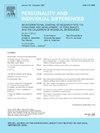Effects of attachment styles and Dark Tetrad traits on breakup strategies
IF 2.6
2区 心理学
Q1 PSYCHOLOGY, SOCIAL
引用次数: 0
Abstract
The aim of this study was to explore the effects of attachment styles and Dark Tetrad traits on breakup strategies (avoidance/withdrawal, positive tone/self-blame, open confrontation, cost escalation, manipulation, distant/mediated communication and de-escalation). The sample comprised 449 adults (75.35 % women) from Serbia with experience in intimate relationships. The results showed that the preoccupied attachment style and secondary psychopathy are associated with most breakup strategies, while none of the predictors were significantly related to positive tone/self-blame. Additionally, the fearful style was associated with open confrontation and distant/mediated communication, whereas the dismissing style was linked to cost escalation. Among the 7 Dark Tetrad traits, primary and secondary psychopathy were related to open confrontation, manipulation, cost escalation and de-escalation. Secondary psychopathy was also associated with distant/mediated communication. Machiavellianism and narcissistic admiration were negatively related to open confrontation, while narcissistic rivalry was positively related to cost escalation. Finally, sadism was negatively associated with avoidance/withdrawal and positively with de-escalation. Overall, detrimental ways of breaking up are present in insecure attachment styles and dark traits, with specific patterns of associations depending on attachment quality or dark trait in question.
依恋类型和黑暗四分体特征对分手策略的影响
本研究旨在探讨依恋类型和黑暗四分体特征对分手策略(回避/退缩、积极语气/自责、公开对抗、成本升级、操纵、远距离/中介沟通和降级)的影响。样本包括来自塞尔维亚的有亲密关系经验的449名成年人(75.35%为女性)。结果表明,专注型依恋类型和继发性精神病与大多数分手策略相关,而积极语气/自责没有显著相关。此外,恐惧风格与公开对抗和远距离/中介沟通有关,而不屑一顾风格与成本上升有关。在7个黑暗四人格特征中,原发性和继发精神病与公开对抗、操纵、成本升级和降级有关。继发性精神病也与远距离/媒介沟通有关。马基雅维利主义和自恋崇拜与公开对抗负相关,而自恋竞争与成本上升正相关。最后,虐待狂与回避/退缩负相关,与降级正相关。总的来说,有害的分手方式存在于不安全的依恋类型和黑暗特质中,具体的联系模式取决于依恋质量或问题中的黑暗特质。
本文章由计算机程序翻译,如有差异,请以英文原文为准。
求助全文
约1分钟内获得全文
求助全文
来源期刊

Personality and Individual Differences
PSYCHOLOGY, SOCIAL-
CiteScore
8.50
自引率
4.70%
发文量
577
审稿时长
41 days
期刊介绍:
Personality and Individual Differences is devoted to the publication of articles (experimental, theoretical, review) which aim to integrate as far as possible the major factors of personality with empirical paradigms from experimental, physiological, animal, clinical, educational, criminological or industrial psychology or to seek an explanation for the causes and major determinants of individual differences in concepts derived from these disciplines. The editors are concerned with both genetic and environmental causes, and they are particularly interested in possible interaction effects.
 求助内容:
求助内容: 应助结果提醒方式:
应助结果提醒方式:


